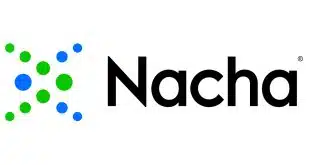A new point-of-sale payment option that converts checks to electronic debits, available starting next month, will open the retailer market for remote deposit capture, a leading payments executive says. The new option, called back-office conversion (BOC), allows merchants to scan consumer checks in bulk and process them through the automated clearing house network rather than through image exchange. “BOC will open up the whole retailing community, which has been shut out from Check 21,” predicts Danne L. Buchanan, chief executive at NetDeposit Inc., a Salt Lake City, Utah, provider of processing software for remote deposit capture, a process by which businesses convert checks into electronic items at the point of capture before sending the items to their banks for settlement. With that opening, says Buchanan, who is also executive vice president at Zions Bancorporation, NetDeposit's parent company, banks may find themselves selling electronic transaction services once again to a market they long ago ceded to third parties, such as processors and independent sales organizations. “Banks have kind of abandoned the retail payment marketplace,” he says. “For the most part, ISOs have controlled that.” As for NetDeposit, Buchanan says the company will “absolutely” work with interested ISOs to help sell BOC to merchants. While the market for remote capture has heated up over the past two years as banks have become increasingly aggressive about selling it to corporate clients, Buchanan says most merchants have not seen a strong case to adopt it. This is chiefly because remote capture relies heavily on the substitute checks, or image-replacement documents (IRDs), provided for in the 2004 Check Clearing for the 21st Century Act (Check 21). These IRDs, which are printouts of check images, allow paying banks that can't handle electronic images to settle items. For businesses accepting a good many high-dollar-value checks, Buchanan says, the expense created by processing IRDs makes some sense. But for low-value checks, which most consumer-oriented retailers accept, the faster clearing time offered by Check 21 could be more than offset by the IRD cost. “For a retailer, a day's float on a $150 item is going to be less than the cost of an IRD, so there's not much of a benefit to a retailer,” he notes. But with BOC, which goes on stream March 16, merchants will be able to use the ACH rather than image-exchange networks and IRDs, cutting costs for remote capture dramatically, Buchanan says. Pricing information for BOC is still sketchy, but Buchanan says if banks price it comparably to accounts-receivable conversion (ARC), the e-check code that allows billers to convert consumer checks at lockboxes, the cost will fall between a penny and 3 cents per item, Buchanan figures. By contrast, he says, an IRD-based transaction can cost a business anywhere from 11 cents to 20 cents. “Retailers will see pretty meaningful declines [in transaction costs] with BOC,” he says. But merchants won't be able to convert all checks they accept. Though viewed by some merchants as superior to another point-of-sale ACH option known as point-of-purchase (POP) conversion, BOC like all e-check options comes with the limitation that only checks drawn on consumer accounts are eligible. Buchanan also points out that merchants will assume the risk of signature fraud on checks they convert, whereas with paper checks and image exchange exchange this liability rests with the paying bank. As with many remote-capture vendors, business is rapidly mounting for NetDeposit. It claims about 9,000 corporate seats, or enabled workstations, so far for its product, roughly twice the number it had at the end of 2005, according to Buchanan. “There's still a lot of growth to go,” he says. “There's still a lot of empty corporate seats out there.”
Check Also
Same-Day ACH Volume Rises 19%
Business, consumer, and government use of the automated clearing house network continues on its growth …



